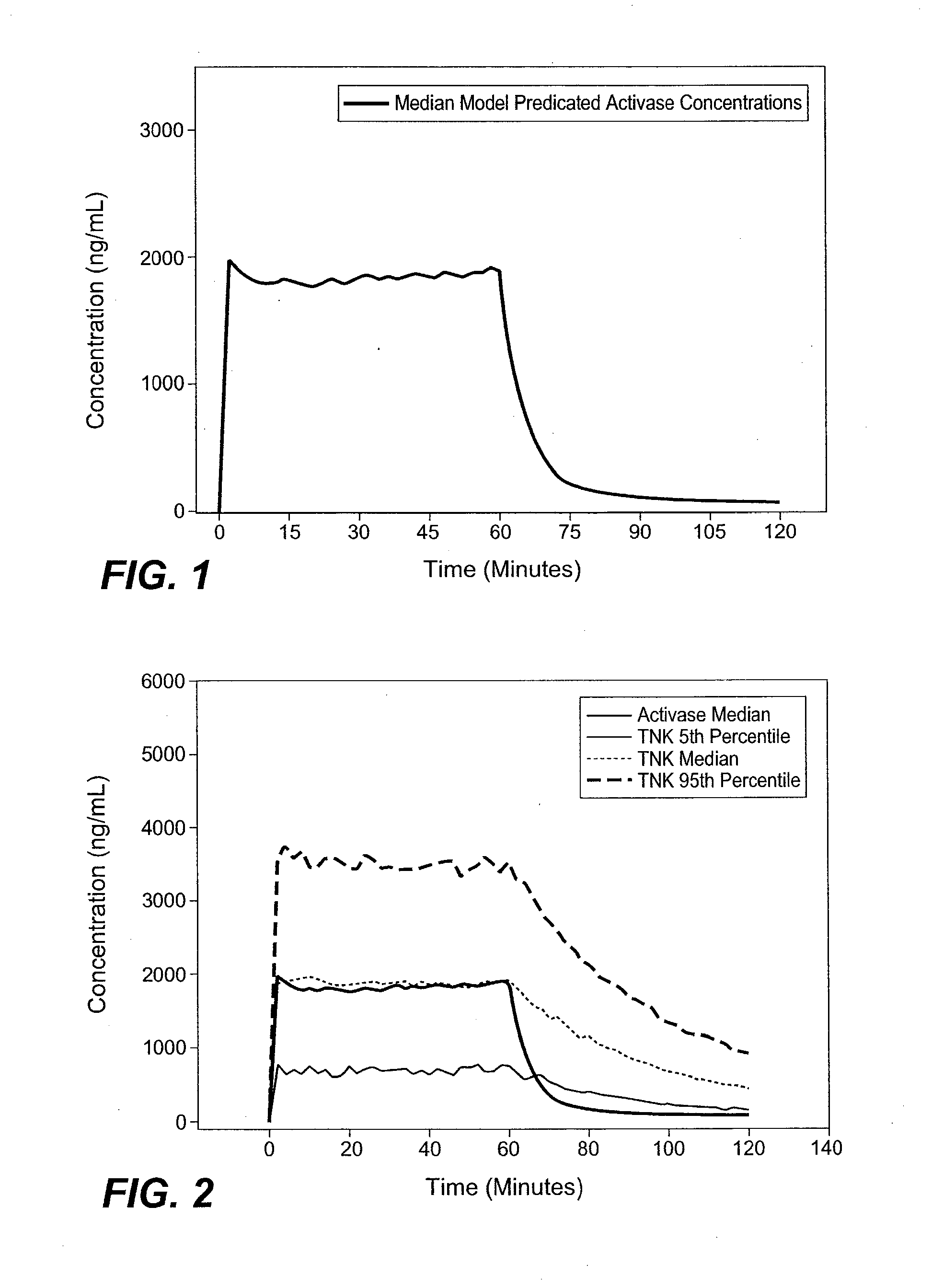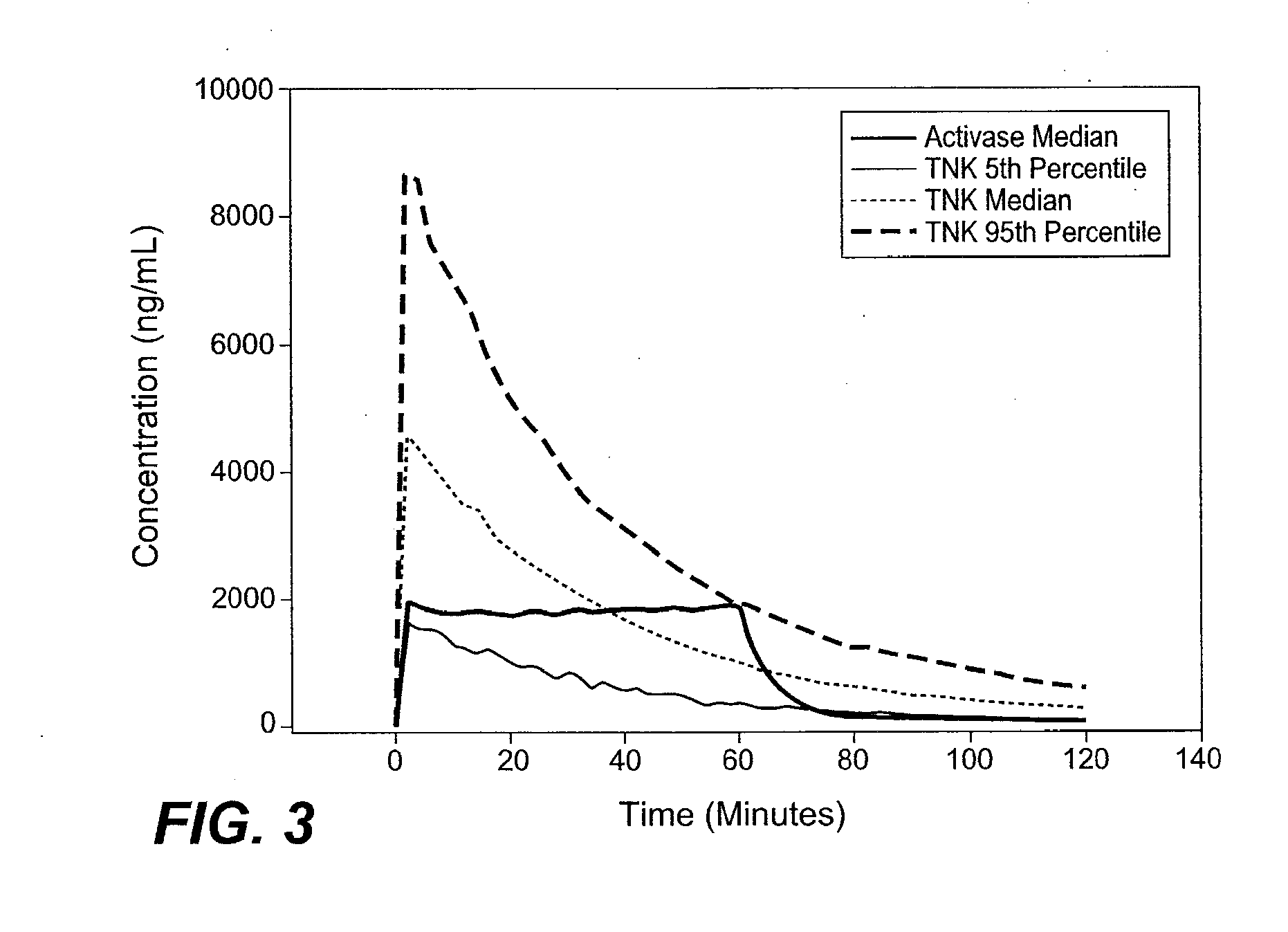Method of treating stroke with thrombolytic agent
a thrombolytic agent and stroke technology, applied in the direction of antibody medical ingredients, peptide/protein ingredients, extracellular fluid disorders, etc., can solve the problems of systemic hypoperfusion, serious problems for society, long-term disability,
- Summary
- Abstract
- Description
- Claims
- Application Information
AI Technical Summary
Benefits of technology
Problems solved by technology
Method used
Image
Examples
example
Determination of Dosing Regimen of Tenecteplase for the Treatment of Acute Ischemic Stroke
[0084]A dosing strategy that improves the safety and efficacy of the treatment of AIS with tenecteplase was developed by performing PK modeling.
[0085]It has been established that efficacy outcomes with thrombolytics are related to dose and concentration for both ACTIVASE® (alteplase) (Gulba et al. J. Am. Coll. Cardiol., 30 / 7 1611-1617 (1997); Tanswell et al., J. Am. Coll. Cardiol., 19 / 5 1071-1075 (1992)) and TNKase (tenecteplase) (Wang-Clow et al., Am Heart J., 141 / 1 33-40 (2001); Tanswell et al., Clin. Pharmacokinet., 41 / 15 1229-45 (2002)). This observation suggested that a PK-based approach to dose selection with thrombolytics would be appropriate. Furthermore, PK analysis of a rabbit in-vivo PK and pharmacodynamic (PD) study suggested that alteplase and TNKase were approximately equipotent when comparing the area under the curve (AUC) and time to 50% clot lysis (Thomas et al. Stroke, 25 / 10 2...
PUM
| Property | Measurement | Unit |
|---|---|---|
| time | aaaaa | aaaaa |
| time | aaaaa | aaaaa |
| time | aaaaa | aaaaa |
Abstract
Description
Claims
Application Information
 Login to View More
Login to View More - R&D
- Intellectual Property
- Life Sciences
- Materials
- Tech Scout
- Unparalleled Data Quality
- Higher Quality Content
- 60% Fewer Hallucinations
Browse by: Latest US Patents, China's latest patents, Technical Efficacy Thesaurus, Application Domain, Technology Topic, Popular Technical Reports.
© 2025 PatSnap. All rights reserved.Legal|Privacy policy|Modern Slavery Act Transparency Statement|Sitemap|About US| Contact US: help@patsnap.com



